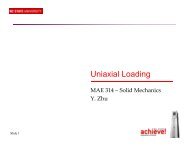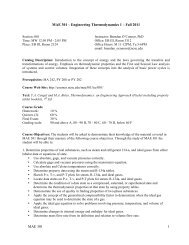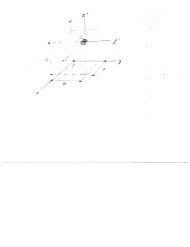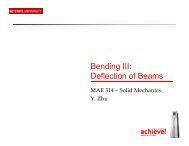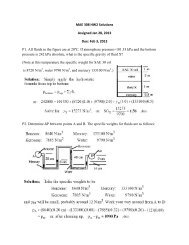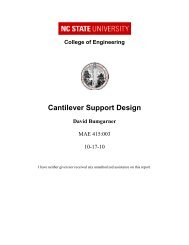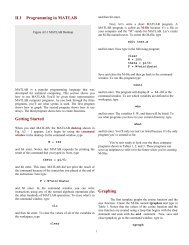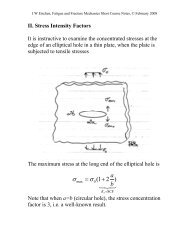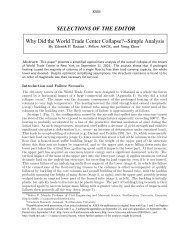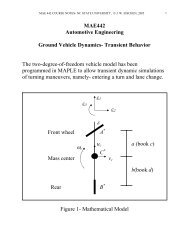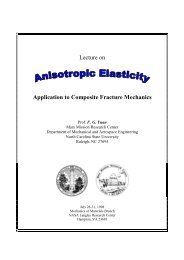The Online Ethics Center for Engineering & Science - Department of ...
The Online Ethics Center for Engineering & Science - Department of ...
The Online Ethics Center for Engineering & Science - Department of ...
You also want an ePaper? Increase the reach of your titles
YUMPU automatically turns print PDFs into web optimized ePapers that Google loves.
<strong>Online</strong> <strong>Ethics</strong> <strong>Center</strong>: Exploring the Effects <strong>of</strong> Quartering WindsTexto en EspañolPart 4 Exploring the Effects <strong>of</strong> Quartering WindsIn June 1978, a month after LeMessurier was told <strong>of</strong> the switch from welds to bolts in the Citicorpbuilding, he received a telephone call from a student. This student's pr<strong>of</strong>essor had been studyingLeMessurier's Citicorp design and had concluded that LeMessurier had put the building's nine-storysupports in the wrong place. <strong>The</strong> supports belonged on the tower's corners, according to this pr<strong>of</strong>essor,not at the tower's midpoints.<strong>The</strong> pr<strong>of</strong>essor had not understood the design problem that had been faced, so LeMessurier explained hisentire line <strong>of</strong> reasoning <strong>for</strong> putting the tower's supports at the building's midpoints. He added that hisunique design, including the supports and the diagonal-brace system, made the building particularlyresistant to quartering, or diagonal, winds -- that is, winds coming on the diagonal and so hitting twosides <strong>of</strong> the building simultaneously. Pictured is a diagram <strong>of</strong> why perpendicular winds cause sway in abuilding.Shortly thereafter, LeMessurier decided that the subject <strong>of</strong> the Citicorptower and quartering winds would make an interesting topic <strong>for</strong> thestructural engineering class he taught at Harvard. Since at the time therequirements <strong>of</strong> the New York building code, like all other buildingcodes, had covered only perpendicular winds, LeMessurier did not knowhow his design would fare in quartering winds.Interested to see if the building's diagonal braces would be as strong inquartering winds as they had been calculated to be in perpendicularwinds, LeMessurier did some computations. He found that <strong>for</strong> a given quartering wind, stresses in half <strong>of</strong>a certain number <strong>of</strong> structural members increased by 40 percent.<strong>The</strong>n he became concerned about the substitution <strong>of</strong> bolts <strong>for</strong> welds. Had the New York contractors takenquartering winds into account when they replaced the welds with bolts? Had they used the right number<strong>of</strong> bolts? <strong>The</strong> second question was particularly important -- a 40 percent increase in stress on certainstructural members resulted in a 160 percent increase <strong>of</strong> stress on the building's joints, so it was vital thatthe correct number <strong>of</strong> bolts be used to ensure that each joint was the proper strength.What he found out was disturbing. <strong>The</strong> New York firm had disregarded quartering winds when theysubstituted bolted joints <strong>for</strong> welded ones. Furthermore, the contractors had interpreted the New Yorkbuilding code in such a way as to exempt many <strong>of</strong> the tower's diagonal braces from loadbearingcalculations, so they had used far too few bolts.http://onlineethics.org/moral/lemessurier/4.html (1 <strong>of</strong> 2) [10/13/2004 1:44:47 PM]




